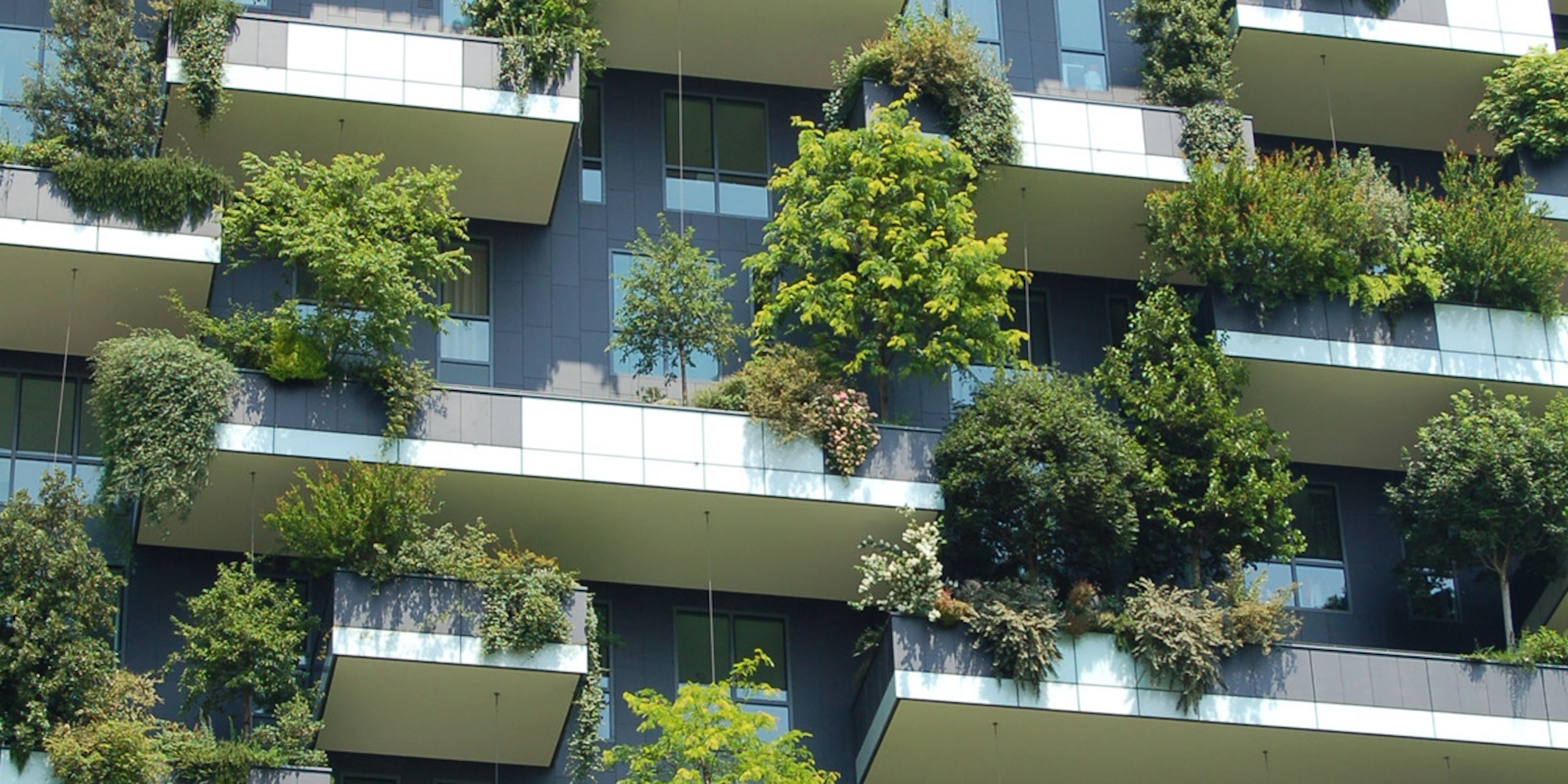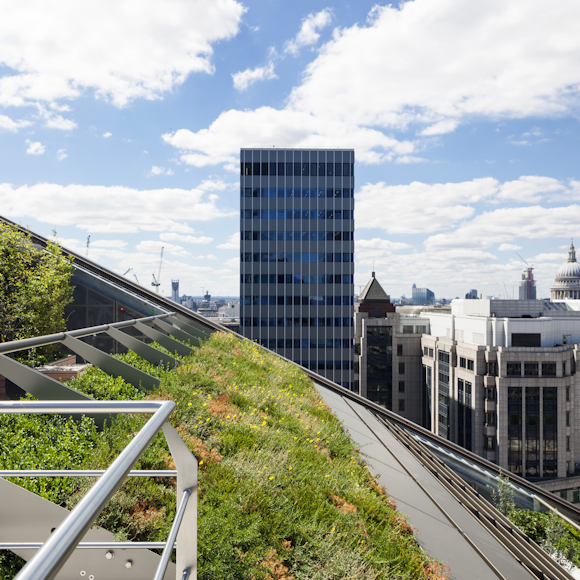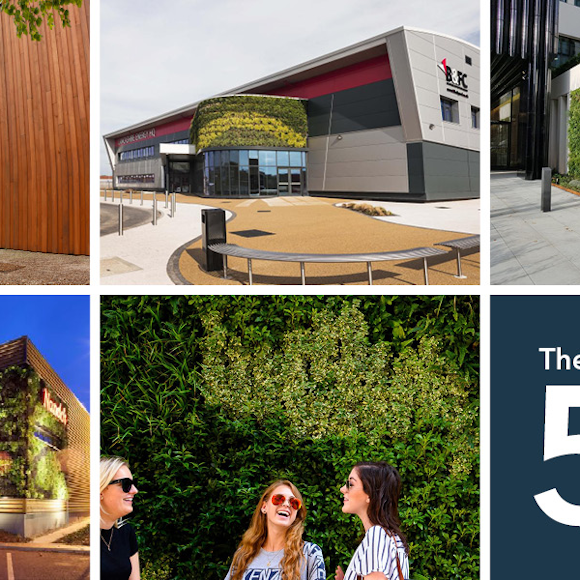As our cities grow, it’s important to consider the impact these spaces have on nature. What was once grassland or forest is now covered in concrete - how does that affect the area’s ecosystem?
We now understand that what we do to the earth can damage it, changing the climate of our planet and affecting the animals, plants, and people who live on it. The world is learning more about climate change every day, which has led to green spaces being featured more prominently in urban planning.
While urban greening might have once meant nothing more than parks and tree-lined streets, it now includes a wide variety of beautiful and creative installations. Projects like living walls and green roofs are becoming increasingly popular and are featured in more businesses, public buildings and residential areas.
The aims of urban greening are numerous, but effective; they improve the lives of the people and wildlife in the area, as well as making our cities eco-friendlier and pleasing to the eye.
Climate change isn’t just about rising sea levels; we can see the effects of excessive pollution in urban areas, the smog of Beijing being an extreme example. Cities all around the world are using urban greening to protect and improve their skylines and their health.
Here, we dive deeper into the the subject of urban greening.
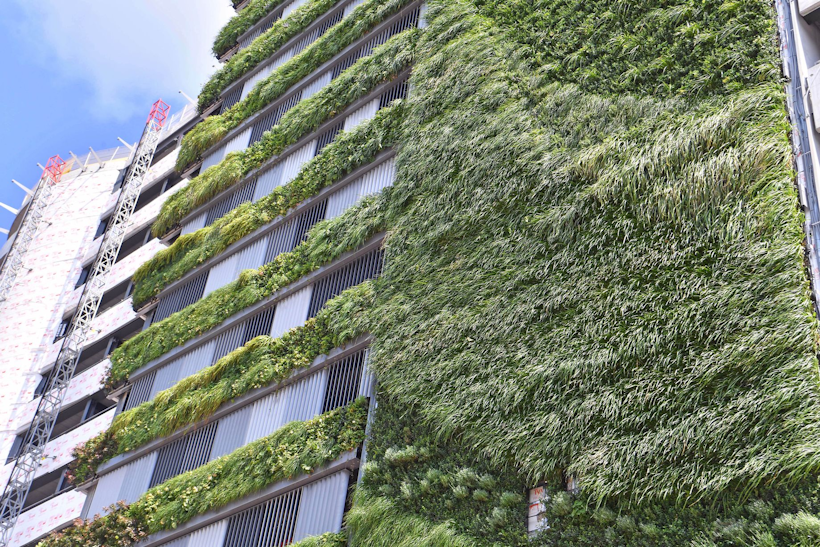
What is urban greening?
But what exactly is “urban greening”?
It has been defined as “public landscaping and urban forestry projects that create mutually beneficial relationships between city dwellers and their environments”.
In short, it’s making urban spaces green!
The most common forms of urban greening are installing trees, parks, and landscaped green areas in newly-built urban projects.
Benefits of urban greening
- Combat air and noise pollution.
- Soaks up rainwater that may otherwise create flooding.
- Creates a habitat for local wildlife.
- Offsets carbon emissions in the local area.
- It has shown to lift morale in the people who see it, with physical and mental health benefits.
- Calming traffic and lessening urban crime.
As climate change becomes a more prominent issue, architects and city planners alike have been exploring ways to create sustainable urban living.
When something is built, its future is considered as well as its immediate use. By employing urban greening, these buildings contribute more to the environment and the people using it. A living wall or tree-lined path exponentially increases a site’s positive environmental impact. These installations pump vast amounts of oxygen into the air around them, as well as absorbing equally vast amounts of carbon dioxide which would otherwise harm the people around it.
Of course, installations like living walls also help wildlife, with videos of blackbirds living in them reminding us all that we share the world with other creatures, who need a place to live too! Integrating nature into grey urban areas brings beauty and a sense of calm which can be difficult to find in a bustling city.
Learn more about Living Walls
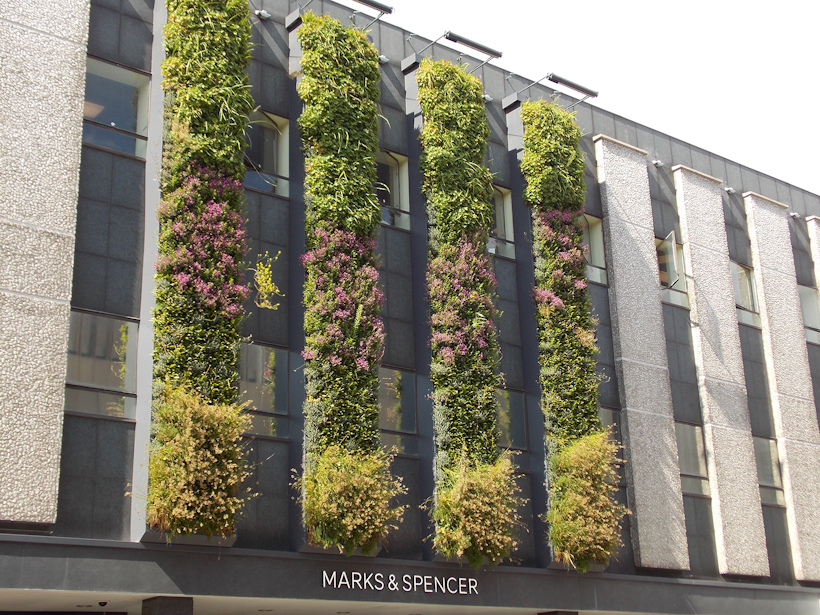
The London urban greening plan
With so many benefits, it’s easy to understand why cities around the world are pushing to incorporate urban greening into their future.
For example, the Mayor of London has announced in the latest London Plan that not only will urban greening be supported, but “The Mayor seeks to increase the amount of surface area greened in the Central Activities Zone by at least five per cent by 2030, and a further five per cent by 2050”.
The Mayor also announced a plan to plant an extra two million trees in the city by 2025, following a previous plan to plant 10,000 trees by 2015.
These plans have been implemented because of research that indicates the effectiveness of urban greening in reducing local temperatures. Temperature reduction is a high priority for London after the city experienced a heatwave in 2003 that led to over 600 deaths. This heatwave, according to the London Plan, was so severe because of the urban heat island effect, which is heightened temperatures in urban areas due to human activity and energy usage.
The plan states the importance of cooling the urban environment in combatting climate change, following research undertaken in Manchester that recommends a 10% increase in green space within a city. Emphasis has been places on including urban greening and green spaces not only in current buildings, but also in future projects.
Green infrastructure must now be included from the very beginning of a project, and development proposals must show that their ideas include green spaces and features which will help to combat climate change.
London is not alone in its attitudes toward the future of its city; cities around the world are making sure that their latest developments include urban greening.
How will urban greening be used in the future?
The urban environment is constantly evolving and growing, as more people move to cities and industries thrive.
Urban greening has become incredibly important for many reasons; making cities less grey and showing the changing of the seasons seasons to name just a few.
One vital contribution that urban greening makes is combatting climate change, by making the local area more eco-friendly - urban greening helps with local oxygen and floodwater levels, as well as providing habitats for wildlife.
A term that once just meant planting trees in cities has now grown to include a creative variety of green infrastructure such as living walls and green roofs.
London has been particularly forward-thinking in their approach to urban greening, with the Mayor announcing that urban greening must be included in all future city developments and implementing specific green space targets for the city to reach in the next few years.
The world has seen the effects that climate change has on its population, wildlife, and landscape; they now intend to fight it.
Urban greening has proven to be a smart way to include greenery into our least environmentally-friendly areas, and could be the way forward for eco-conscious societies.
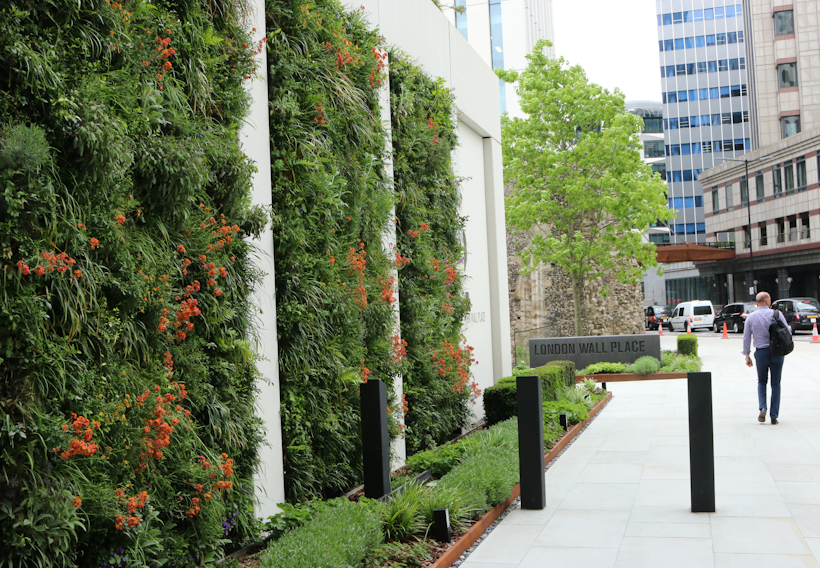
Living wall systems from Viritopia
Transforming public spaces is high on the agenda at the moment, with many towns and cities competing to be named the best place to live. So what makes one public space or station better than others?
The key is to make it stand out. And with a living wall, you’ll be creating a feature many people have never experienced before.
At Viritopia, we’re experts at designing vibrant new spaces that people enjoy spending time in, and living walls look great in any space.
Contrast and complement a living wall against wooden panels, brick walls or any material – whether your space is modern or traditional, the addition of a living wall creates a contemporary feel that will delight for years.
With internal irrigation and drainage, living walls are easy to maintain and as they’re living, they also purify the air around them.
If you want to add some natural beauty to the inside or outside or your building, or to want to reap the environmental benefits of a living wall, get in touch with our expert team today.
